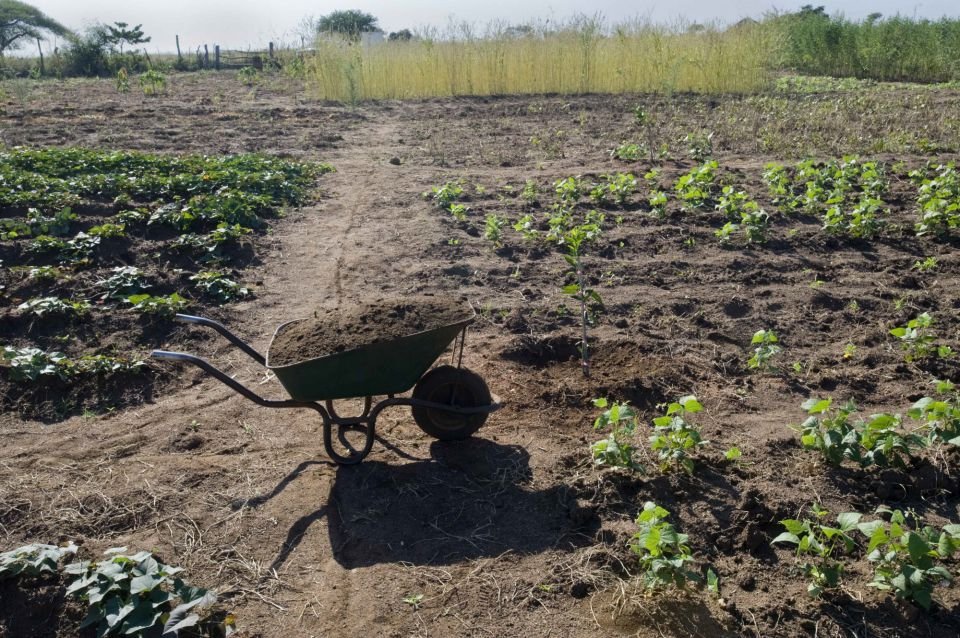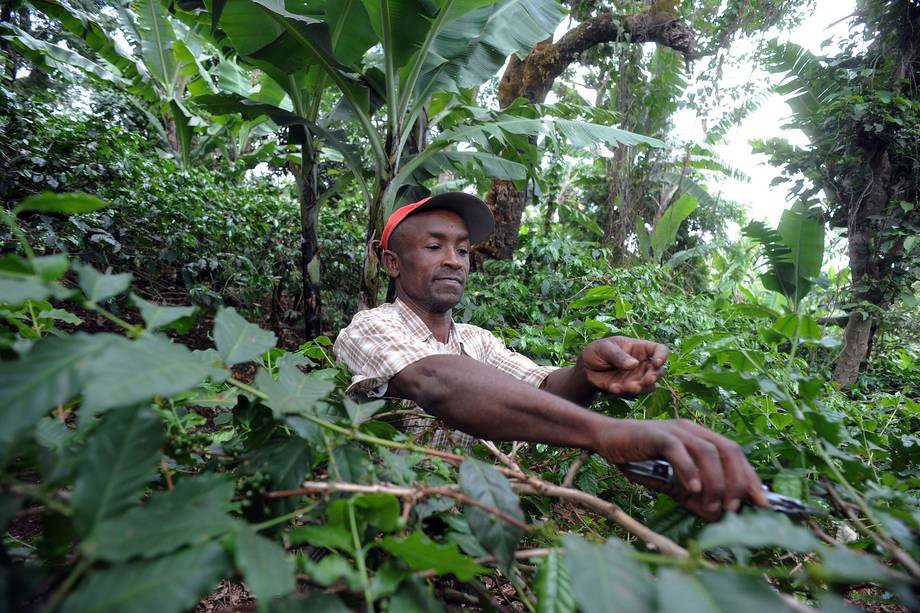2015 is the Year of the Soil.
To many, that might sound underwhelming. The whole year is dedicated to soil? The stuff that people get mad about if it gets on their shoes?
Yes, that stuff.
Soil has quietly toiled for millions of years to earn this accolade.
It’s one of the foundations of organic life on Earth. Soil allows plants, animals and organisms of all kinds to grow and thrive.
And soil is way more dynamic than you might think. Soil hosts vibrant microscopic ecosystems. Small environmental changes can completely alter how well it fosters life above ground.
Without soil, the very web of life would collapse. And soil is under threat all around the world.
Don’t believe me? Well here are 5 facts about soil that might change your mind:
1/ More microorganisms exist in a handful of soil than there are people on Earth
That means there are more than 7 billion microorganisms in a handful of soil. If you scoop up some soil, you might have a hard time finding a single worm, so where are these billions hiding?
Well, as the name suggests, they’re microscopic. The organisms range from bacteria,actinomycetes, fungi, algae and protozoa and they each perform essential functions such as removing contaminants, increasing fertility, increasing water absorption, stabilizing overall composition, producing nutrients and so on.

FAO
When these microorganisms are healthy, the plants that grow above them are much healthier.
These little guys also need conditions to be just right to live. When pollution and other forms of degradation become too severe, soil effectively gets stripped of its vibrant ecosystem.
2/ It takes 500 years for nature to create an inch of topsoil, but 25 billion tons of it are lost each year
Topsoil is the layer where all the magic happens—it’s where plants set down their roots and start growing and where all the little microorganisms like to hang out.
It takes so long to form because rocks, minerals, animals and plant life have to erode, break down and then accumulate.

FAO
This slow build is in sharp contrast to the rapid destruction caused by human activity. The main causes are expanding cities, deforestation, unsustainable land use and management practices, pollution, overgrazing and climate change.
All of these factors violently disrupt the condition of soil. 33% of the world’s soil is already degraded and if sustainable practices aren’t adopted, this number will continue to climb.
*I should note that humans can create topsoil at a much faster rate--but this soil will be less robust.
3/ Soil—like trees and the oceans—acts as a carbon sink
The phrase “carbon sink” is used a lot as climate change worsens.
It basically means a place where carbon can be stored. It doesn’t necessarily mean safe storage of carbon—because as carbon is absorbed, the composition of something changes. As the ocean absorbs more carbon, for instance, it becomes increasingly acidified, which is causing big problems.

FAO
A grand irony is that as human development emits more carbon, it is also compromising the Earth’s ability to store carbon, which accelerates climate change.
4/ Unhealthy soil = Unhealthy world
One flaw of modern agriculture is its intense reliance on pesticides and herbicides. Historically, these chemicals didn’t exist and crops still grew.
So what happened?
Basically, human development and poor farming practices drastically weakened soil. Naturally, soil can defend against pests and the natural diversity of plants reinforces this intrinsic defense system by providing diverse nutrients.
Deforestation & industrial agriculture threatening our closest relatives, the great apes https://t.co/F7iCeu80Ugpic.twitter.com/tS52xPlHa4
— Jane Goodall Inst CA (@JaneGoodallCAN) December 10, 2015Practices such as monoculture farming deprives soil of a diverse array of nutrients and weakens it. Most crops preferred by industrial agriculture are very weak themselves and so, combined with the weak soil, they would be devoured without chemical assistance.
These chemicals, in turn, further degrade the soil and generally leak into water systems. The vicious cycle widens and widens.
And these chemicals then make their way into animal and human diets.
5/ Humans can rehabilitate soil
Humans are the biggest threat to soil—but we can also become soil’s best friend.
This all starts with appreciating the complexity and beauty of soil. Then, farming practices can be adjusted to tend to and enrich this complexity.
This mostly means returning to a model of crop diversity and rotation so that soil can recuperate nutrients and become resilient. It also means switching from deforestation to reforestation, reining in pollution-heavy industries and ensuring that cities and communities are built in accordance with nature rather than against nature.

Soil does not have to be degraded for human society to develop and thrive. In fact, if soil is protected and improved, then human society will be better off. It will be better protected against environmental catastrophes and the worst of climate change. It will have a better and more reliable supply of food, cleaner waterways and even cleaner air. And it will live in a world with far more diversity—something nobody should take for granted.
The benefits of soil are countless. And they're benefits that have been shaped over millions of years. Anytime human development takes place, the impact on soil should be considered.
Because a world with healthy soil is a world with less poverty.
What ways do you think the soil of the world can be protected and improved? Let me know in the comments section below.